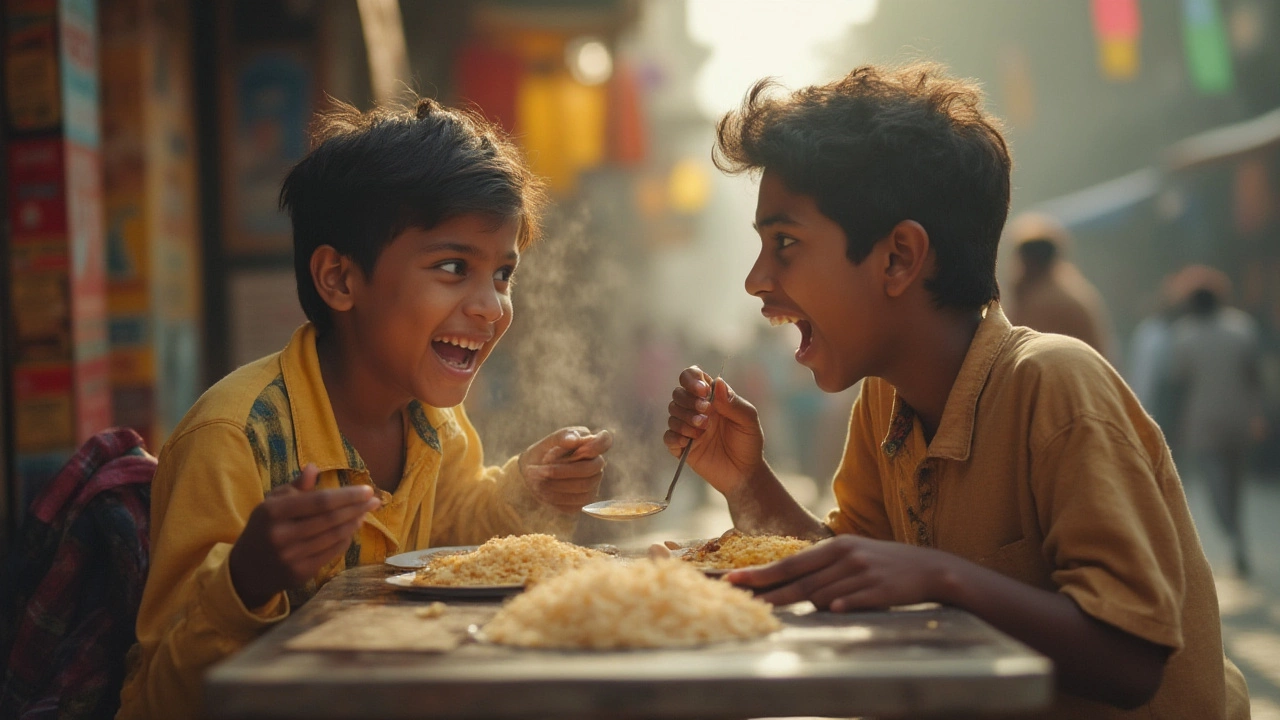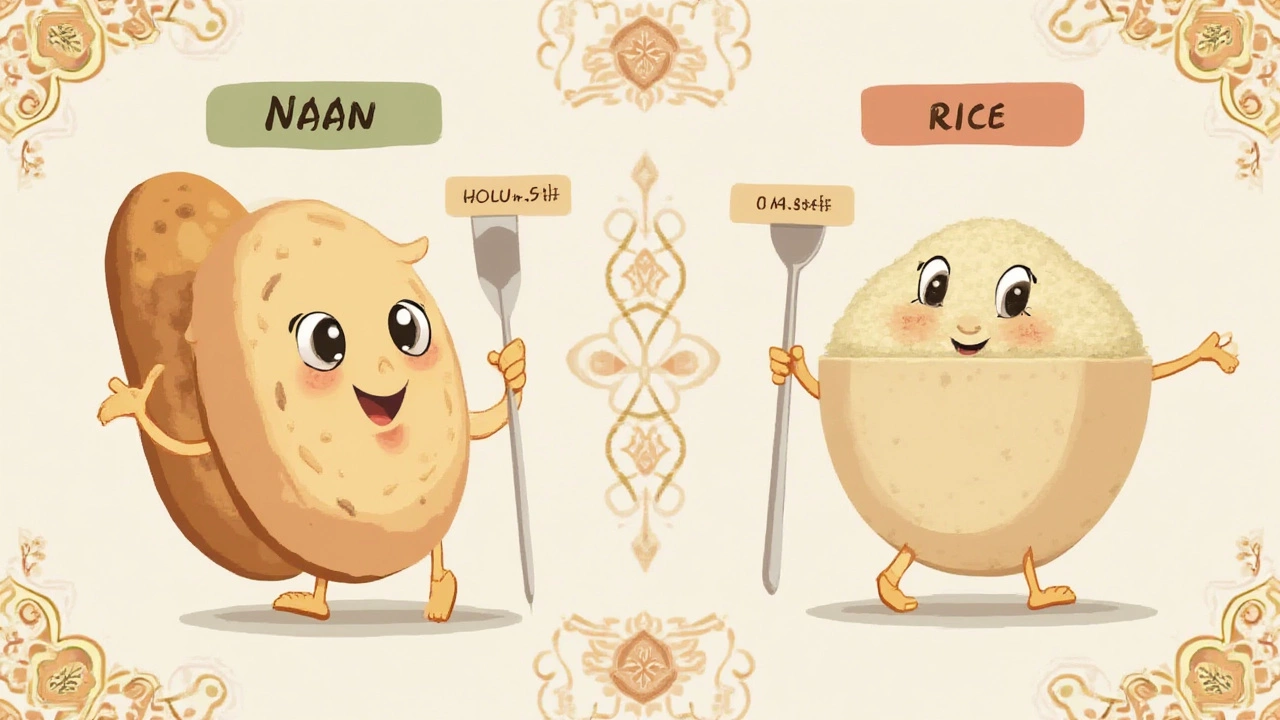Picture this: You’re at your favourite Indian restaurant in Auckland, your stomach's rumbling, and the waiter asks—naan or rice? It’s not just about taste or tradition anymore. Both are mainstays of Indian cuisine, but the debate has quietly bubbled up in kitchens and dining tables everywhere: Is naan actually better for you than rice, or have we just fallen for the fluff of that pillowy bread?
Of course, nobody orders a curry purely for nutritional reasons, but with more of us trying to get that subtle balance between enjoying our food and feeling good about what goes in, choosing naan or rice takes on a whole new meaning. A few years back, University of Otago researchers actually found Indian food was one of the top three cuisines Kiwis reached for when eating out. With that in mind, let’s start untangling the details—you might never order on autopilot again.
Nutritional Breakdown: Naan vs. Rice
If you’ve ever secretly wondered which is the lighter option as you ladle masala onto your plate, you’re not alone. Naan and rice both start out pretty simple—flour and water for naan, and just grains for rice—but the journey from kitchen to table is where their personalities and calories part ways.
A typical serving of plain naan (about 100 grams) will land you roughly 290 calories, with around 10 grams of protein, 54 grams of carbs, and 6 grams of fat. Factor in garlic butter or oil, and the calories can climb even higher, with fat content easily doubling due to added ghee or butter. It’s also worth noting that naan is usually made with white flour (maida), which has less fiber and more simple carbs than whole grain flours. Not the greatest if you’re watching your blood sugar spikes or trying to squeeze in more fiber.
Now, turn to rice: Plain, steamed basmati rice (about 100 grams cooked) comes in at 130 calories, just 2.7 grams of protein, 28 grams of carbs, and almost zero fat. Brown rice? Add a tad more fiber and B vitamins. Did you know? Basmati actually has a slightly lower glycemic index (50-58) compared to many other white rices, meaning it won’t flood your bloodstream with sugar as quickly.
Here’s a quick direct comparison in table format:
| Plain Naan (100g) | Basmati Rice, Cooked (100g) | |
|---|---|---|
| Calories | 290 | 130 |
| Carbs (g) | 54 | 28 |
| Protein (g) | 10 | 2.7 |
| Fat (g) | 6 | 0.3 |
| Fiber (g) | 2 | 0.4 (white), 1.6 (brown) |
Naan has the edge for protein, but rice is clearly lighter in calories and fat. If you switch to brown rice, fiber jumps up, something naan sorely lacks—unless you make it whole wheat, which, to be honest, is rare outside homemade kitchens.
Health Impact: What Does Science Say?
Okay, so calories and carbs get tossed around a lot, but what are the health pros and cons hiding beneath the surface here? First off, let’s talk blood sugar. Refined flours like those used in naan digest quickly, spiking your glucose. In fact, if you’re managing diabetes or prediabetes, white rice and plain naan can both be problematic, but naan’s higher fat and lower fiber generally put it in the fast lane for sugar surges.
On the flip side, rice is gluten-free, making it a safe option if you have celiac disease or any kind of gluten intolerance. Naan, with its wheat base, is a no-go for these folks unless you find a gluten-free twist, which still isn’t mainstream (yet!). Some dieticians in New Zealand even warn how easy it is to underestimate portion sizes with naan, especially since it’s cut into big, fluffy pieces. Eating two of those could bring you dangerously close to your recommended daily calories without even touching the curry or the dessert.
Whole grain rice brings a significant health advantage. A study published in The BMJ back in 2023 analyzed over 100,000 people across Asia-Pacific and Europe and found that high whole grain rice consumption was lined up nicely with lower risk of heart disease, mainly because of its fiber and slow-digesting carbs.
No shade to naan though: When made traditionally in tandoori ovens, it does pick up a small protein and mineral boost from yogurt and sometimes eggs mixed into the dough. If you’re an athlete, that extra protein can be handy, especially if you’re working muscle recovery. But the sodium can creep up, too, particularly in restaurant naan, thanks to added salt and baking powder. High sodium? Not your friend if you’ve got high blood pressure.
Another twist—a 2022 survey in New Zealand found that diners who regularly chose rice over naan had, on average, a lower BMI. While this isn’t all thanks to rice—portion size, toppings, and side dishes play their part—it’s a telling hint that starchy breads like naan can quickly add up if not balanced well.

Texture, Taste, and Satiety: Eating With All Your Senses
You know that moment when you scoop a saucy curry with warm, fresh naan and everything just melts? Taste and texture aren’t minor details—they actually change how full you feel and, weirdly, how much you eat. Naan is chewy, slightly charred, sometimes buttery, and it feels more filling per bite. The trouble is, it’s deceptively easy to eat several pieces because, well, it tastes so darn good with everything from korma to daal.
Rice, on the other hand, plays supporting act—a bit lighter, less rich, and soaks up curry differently. It doesn’t overwhelm bold flavors. Studies on sensory eating (Otago University, 2024) even show that when people eat food with contrasting textures (like crispy papadum, chewy naan, and soft rice), they naturally slow down, eat a little less, and feel satisfied sooner. Something to think about if you’re trying to cut back.
Let’s talk about how these foods keep you full. Despite naan’s heavier bite, rice—especially whole grain—has complex carbs that release energy steadily, so you might actually stay satisfied for longer. On busy days when I’m rushing between writing gigs, brown rice and lentils keep my hunger in check for hours, while naan just begs for an encore round.
There’s also something psychological about bread-based sides—maybe it’s the ancient ritual of breaking bread, or just habit. If finding comfort in naan is what you crave, balance it out with lots of veggies or a lentil-packed curry for some gut-friendly fiber and protein. Your energy (and gut) will thank you.
Customizing for Special Diets and Goals
This is where things get really interesting. Say you’re cutting back on carbs, going gluten-free, or just trying to swap out white carbs for whole grains—can you actually tweak your naan or rice choice to suit your goals? Totally, but there are pros and cons to each.
If you’re on a low-carb plan, naan is off the table unless you try versions made with almond or chickpea flour, which are popping up at Auckland health food spots. While the taste is a bit nuttier and denser, these options slash carbs by nearly half. Not for everyone, but perfect for keto enthusiasts.
Rice, if you want to up your fiber or protein, gives you a few clear hacks: mix equal parts brown and white rice (transition slowly if you’re not into the earthy flavor), or add a handful of lentils or peas for a complete protein hit. Another Kiwi trend? Riced cauliflower—a third the calories, barely any carbs, and fiber to boot. It doesn’t fool anyone completely, but once it’s smothered in curry, most people genuinely don’t miss the real thing.
Those with gluten intolerance or celiac have it way easier with rice—there’s no gluten in single-ingredient rice. There are gluten-free naan brands now (often using potato or rice flour), but the texture isn’t quite as dreamy as the real thing.
Trying to lose weight or keep blood sugar steady? Your best bet is measuring your portions—one small naan or half a cup of rice (cooked) per meal, and loading your plate with veggies or lean proteins. I know, measuring isn’t fun, but when you realize that a typical restaurant serves naan the size of your head, it’s worth pausing for recalibration.

Smart Ways to Enjoy Naan and Rice Without Guilt
Everyone wants to enjoy their food, so here’s the good news: you absolutely can, no matter your goal. If you can’t imagine an Indian feast without naan, try making it at home with whole wheat flour, using yogurt instead of cream, and brushing with olive oil instead of butter. The flavor’s still there, with added bonus points for fiber and healthy fats.
For a lighter touch, pick steamed basmati or brown rice. If you’re eating out, ask if they have brown rice or “light” naan (some Auckland spots offer them if you ask). Or, split an order of naan with friends—sharing means less ends up on your plate for mindless nibbling.
Mix up your sides: add a fresh cucumber salad, a tangy raita, or piles of roasted veggies. These bulk up your meal and make both naan and rice feel more satisfying, without extra calories. Another trick is to eat slowly, savoring each bite—studies out of Monash University in 2024 say mindful eaters naturally consume fewer calories even at buffet-style Indian restaurants.
For a nutrition boost, sprinkle seeds or nuts on top of your rice. Or, stuff your naan with spinach or chickpeas before baking. Foods with a mix of protein, fiber, and healthy fats help curb your appetite and slow that carb burn, making both naan and rice work harder for you.
Both naan and rice can fit in a healthy eating pattern—just keep an eye on the extras and enjoy every bite without a side of guilt. Your table, your choice.
